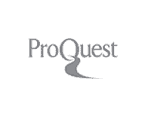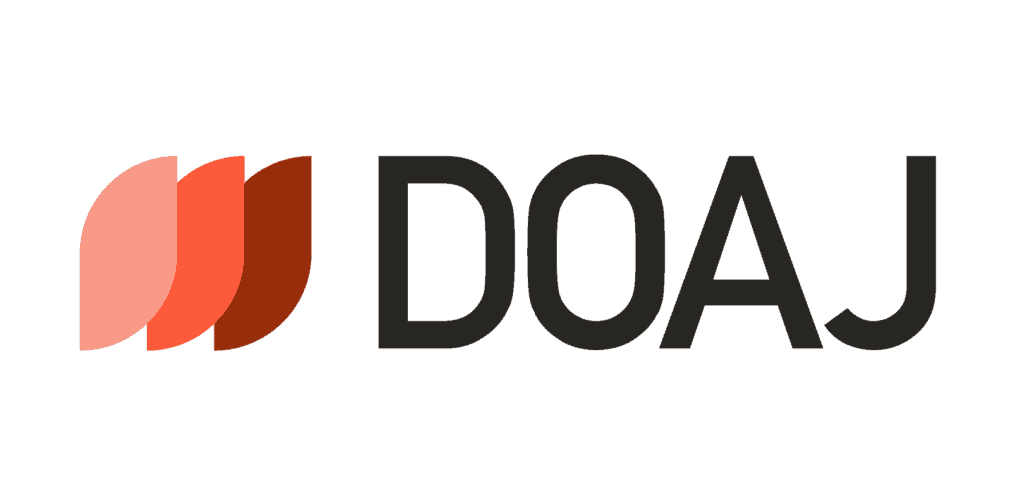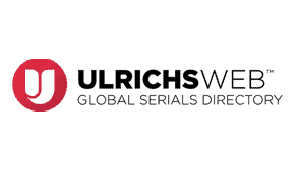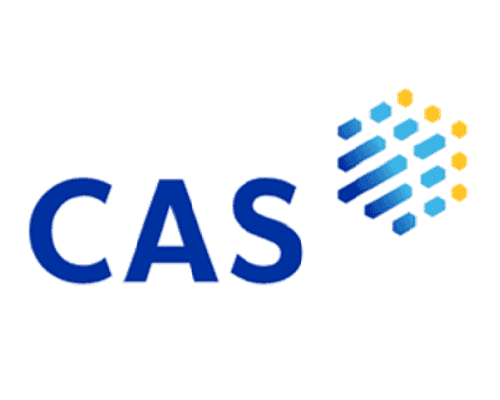Author Guidelines
BIO-Integration (BIOI) focuses on the significance of the integration of a multi-disciplinary approach in answering questions in biology, basic science and medical research. All submitted manuscripts should clearly highlight areas of integration, their significance and the impact of these in addressing current and outstanding issues in the field.
1. Manuscript Content
BIO Integration publishes articles on the integration of two or more of the following areas:
- Human biology
- Human Diseases (etiology, pathogenesis, epidemiology)
- Bioengineering
- Biomaterials
- Imaging
- Drug discovery
- Applied physical sciences
- Medical nanotechnology
- Drug delivery / Gene therapy
- Diagnosis and treatment
- Biomarkers
- Regenerative medicine
- Toxicology and pharmacokinetics
- Data mining
- Medical informatics
- Clinical medicine
2. Manuscript Categories
(1) Original Articles
Word limit: 5,000 words maximum including abstract but excluding references, tables and figures.
Abstract: 350 words maximum, structured with the following subheadings: Background, Methods, Results and Conclusions.
References: There is no limit on the number of references that can be included.
Figures/Tables: There is no limit on the number of figures and tables that can be included, however we recommend 5 figures/ tables per article is most appropriate.
Description: Full-length reports of current research in either basic or clinical science. Meta-analysis will be categorized into “original articles”.
Original Clinical Research
All original clinical research must only include original data, and should be timely (as current as possible). Original research (clinical) must be written in accordance with respective reporting guidelines; includes (but not limited) the following:
- randomized trials, CONSORT
- systematic reviews, PRISMA
- study protocols, SPIRIT/ PRISMA-P
- diagnostic/ intervention/ prognostic studies, STARD, TRIPOD
- observational studies, STROBE
- case reports, CARE
- Qualitative research, cost-effectiveness analyses and decision analyses, COREQ/ CHEERS
- Animal pre-clinical studies, ARRIVE
All other clinical article not listed above should be written according to the EQUATOR Reporting Guidelines (https://www.equator-network.org/reporting-guidelines/)
(2) Reviews
Word limit: no limit.
Abstract: 350 words maximum.
References: There is no limit on the number of references that can be included.
Figures/Tables: There is no limit on the number of figures and tables that can be included.
Description: Review articles should contain authors’ analytical appraisal of published papers and personal viewpoints, instead of a mere aggregation of published abstracts.
(3) Mini Reviews (Research Highlights)
Word limit: 5,000 words maximum including abstract but excluding references, tables and figures.
Abstract: 350 words maximum.
References: There is no limit on the number of references that can be included.
Figures/Tables: There is no limit on the number of figures and tables that can be included.
Description: Mini Reviews are shorter reviews of topics that may be controversial or unresolved.
(4) Letters to the Editor
Word limit: 1000 words maximum excluding references, tables and figures.
Abstract: not required for this manuscript type.
References: 10 references maximum can be included in Letters to the Editor articles.
Figures/Tables: 1 figure or table maximum can be included in Letters to the Editor articles.
Description: Letters to the Editor usually offer perspective to content published in this journal. In this case, a Letter must refer to the original source, and a Response to a Letter must reference the Letter in the first few paragraphs. Letters can use an arbitrary title, but a Response must cite the title of the Letter: e.g. Response to [title of Letter]. This ensures that readers can track the line of discussion. Presentation of interesting clinical cases can also be published in this format. Letters of any matter of interest to readers of the journal are also published.
(5) Editorials
Word
Limit: 2,000 words maximum excluding references, tables and figures.
Abstract: Not required.
References: 25 references maximum can be included in editorial articles.
Figures/Tables: 2 figures or tables maximum can be included in editorial articles.
Description: Editorial is written by the recognized leader(s) or experts in the field.
(6) Editorial Commentaries
Word
Limit: 2,000 words maximum excluding references, tables and figures.
Abstract: not required.
References: 25 references maximum can be included in editorial commentary articles.
Figures/Tables: 2 figures or tables maximum can be included in editorial commentary articles.
Description: Subject experts will be invited to discuss recent papers, reports or events to provide a commentary on their importance. Editorial commentaries will set the problems addressed by the paper/ report/event in the wider context of the topic.
(7) Perspectives/Opinions
Word limit: 3000 words maximum including abstract but excluding references, tables and figures.
Abstract: Unstructured. 300 words maximum.
References: There is no limit on the number of references that can be included.
Figures/Tables: 2 figures or tables maximum can be included in editorial commentary articles.
Description: Perspectives can be more personal, forward-looking or speculative, compared with reviews of a scientific topic. A paper presenting controversial positions or papers of the same topic advocate opposite sides will be published as a perspective. While perspectives will be solicited by the editors; we also welcome timely, unsolicited perspectives.
(8) Case Reports
Word limit: 2,500 words maximum excluding references, tables and figures.
Abstract: A brief and unstructured abstract, usually of 3-4 sentences, is required.
Figures/Tables: 8 figures or tables maximum can be included in case report articles.
Description: New observations of diseases, clinical findings or novel/unique treatment outcomes relevant to practitioners in medicine. The text should be arranged as follows: Introduction, Case Report, Discussion. We do not publish case report only because of the rarity of the cases. Only cases of exceptional interest and novelty are considered. For manuscripts that do not qualify, Editors may ask authors to shorten manuscripts and rewrite as Letters to the Editor.
(9) Technical Notes
Word limit: 2,500 words including abstract but excluding references, tables and figures.
Abstract: 250 words, unstructured (no sub-headers).
References: 35 references maximum can be included in editorial articles.
Figures/Tables: 10 figures or tables maximum can be included in editorial articles.
Description: Technical notes articles should present a new experimental or improved method, test or procedure. The method described may either be completely new, or may offer a better version of an existing method. The article must describe a demonstrable advance on what is currently available. The method needs to have been well-tested and ideally, but not necessarily, used in a way that proves its value.
(10) Brief Reports
Word limit: 2,500 words including abstract but excluding references, tables and figures.
Abstract: 250 words, unstructured (no sub-headers).
References: 35 references maximum can be included in editorial articles.
Figures/Tables: 8 figures or tables maximum can be included in editorial articles.
Description: Manuscripts containing pertinent and interesting observations concerning relevant research in the field of biomedicine and reports on new observations or studies that do not warrant publication as a full research article will be considered for the Brief Reports. These submissions will undergo full peer review.
(11). News and views
Word limit: None
Abstract: Not applicable
References: There is no limit on the number of references that can be included.
Figures/Tables: There is no limit on the number of figures and tables that can be included.
Description: News and views are usually invitational, highlighting recent scientific/medical breakthroughs. This category can also be used to highlight recent events regarding BIO Integration.
(12). Commentary
Word limit: 2,000 words maximum excluding references, tables and figures.
Abstract: 200 words, unstructured (no sub-headers).
References: 20 references maximum can be included.
Figures/Tables: There is no limit on the number of figures and tables that can be included.
Description: Publishes expert opinions regarding recent progress of integrative science.
3. Manuscript Type
Text
Presentation
Text should be double-spaced and free of all corrections. Word format is preferred. Figures should be separate from the text; each figure should be presented on a separate A4 sheet.
Style
- Author’s addresses and affiliations should be on the first page.
Authors must provide all their names, dates of birth, gender, places of birth,
technical titles, degrees, professional information and full work addresses to
include telephone and email address information. - The abstract should have a word limit according to the
manuscript categories, with 4-6 keywords. - The entire document should be paginated and all lines should be
numbered throughout the entire manuscript. - All the mathematical formulae should be numbered consecutively
within parentheses at the end of the formula; formulae should be presented on
separate lines; longer formulae should be broken at an operation symbol.
Significance statement
We request that you include a short statement of significance with original and review articles. This statement should be written to a broad audience and limited to 120 words. These statements will address the novelty aspect and the significance of the work with respect to the impact of integration in the current work. By highlighting the scientific merit of your research, these statements will help make your work more visible to our readership. We will then be able to use these statements to further promote your article and potentially enhance the overall impact of your research.
Illustrations and Tables
There is no limit to the number of illustrations submitted. Authors should pay attention to the clarity and spelling of any lettering on the diagrams. All images should be supplied at 300 dpi or above. All figures will be reduced in size to fit, wherever possible, to the width of a single column, i.e. 85 mm, or a double column, i.e. 174 mm and the height not more than 254 mm.
All illustrations should be clearly numbered with the figure number and caption clearly indicated on the bottom of the figure.
For review articles, figures taken from any published sources must obtain permission prior to publication. These figures should be cited as “Reproduced with permission from Journal name, Permission number, copyright year”
Accepted file formats include JPG or TIF. Vector files should be Ai, EPS or CDR format.
Table numbers and names should be centered; table footnotes should be included at the bottom of the table; table symbols and units should be clearly designated. Authors are requested to express decimal fractions with full-stops, not commas. Tabulated ‘raw’ data should be kept to a minimum.
References
References are cited by number in the text in sequence of first appearance and listed numerically at the end of the text. BIO Integration adheres to the Vancouver reference style. The author can use the Vancouver style that comes with the EndNote software.
Examples of style are:
Periodicals
Authored articles
Weaver DL, Ashikaga T, Krag DN, Skelly JM, Anderson SJ, et al. Effect of occult metastases on survival in node-negative breast cancer. N Engl J Med 2011;364:412-21. [PMID: 21247310; DOI: 10.1056/NEJMoa1008108]
Articles authored by organizations
Diabetes Prevention Program Research Group. Hypertension, insulin, and proinsulin in participants with impaired glucose tolerance. Hypertension 2002;40:679-86 [PMID: 12411462].
Articles – authors and organizations
Vallancien G, Emberton M, Harving N, van Moorselaar RJ; Alf-One Study Group. Sexual dysfunction in 1,274 European men suffering from lower urinary tract symptoms. J Urol 2003;169:2257-61. [ PMID: 12771764; DOI: 10.1097/01.ju.0000067940.76090.73]
Non-Anglophone standard journal articles (title should be translated into English; state original language in parentheses)
Zhang X, Xiong H, Ji TY, Zhang YH, Wang Y. Case report of anti-N-methyl-D-aspartate receptor encephalitis in child. J Appl Clin Pediatr 2012;27:1903-7 (in Chinese).
Articles ahead of print (DOI must be included)
Odibo AO. Falling stillbirth and neonatal mortality rates in twin gestation: not a reason for complacency. BJOG 2018; Epub ahead of print [PMID: 30461178; DOI: 10.1111/1471-0528.15541]
Books
Sherlock S, Dooley J. Diseases of the liver and billiary system. 9th ed. Oxford: Blackwell Sci Pub; 1993. pp. 258-96.
Chapter in a book
Meltzer PS, Kallioniemi A, Trent JM. Chromosome alterations in human solid tumors. In: Vogelstein B, Kinzler KW, editors. The genetic basis of human cancer. New York: McGraw-Hill; 2002. pp. 93-113.
Collected articles, proceedings, etc.
Online resource
FDA News Release. FDA approval brings first gene therapy to the United States. Available from: https://www.fda.gov/NewsEvents/Newsroom/PressAnnouncements/ucm574058.htm. [Last accessed on 30 Oct 2017]
Conference proceedings
Harnden P, Joffe JK, Jones WG, editors. Germ cell tumours V. Proceedings of the 5th Germ Cell Tumour Conference; 2001 Sep 13-15; Leeds, UK. New York: Springer; 2002.
Conference paper
Christensen S, Oppacher F. An analysis of Koza’s computational effort statistic for genetic programming. In: Foster JA, Lutton E, Miller J, Ryan C, Tettamanzi AG, editors. Genetic programming. EuroGP 2002: Proceedings of the 5th European Conference on Genetic Programming; 2002 Apr 3-5; Kinsale, Ireland. Berlin: Springer; 2002. pp. 182-91.
Unpublished articles: The journal does not accept citations to unpublished articles.
For other types of references please refer to U.S. National Library of Medicine.
Acknowledgement
Please provide the name and serial number of the fund project if the research is supported by a research fund or the relevant government departments or social organizations.
4. Disclosure
All authors must individually acknowledge authorship by a signed statement of agreement of author contributions. Each author must disclose all financial relationships related to the subject of the paper. This should include equity ownership, profit-sharing agreements, royalties, patents, and grants. Authors do not need to report the sums concerned. If none, state “none”.
5. Policies on Conflict of Interests/Competing Interests
Conflict of interests/competing interests can be defined as factors which could influence the judgment of an author, reviewer or editors, and may be personal, commercial, political, academic, or financial in nature. Competing interests that might interfere with the objective presentation of the research findings contained in the manuscript should be declared in a paragraph heading “Competing interests” (after Acknowledgement section and before References). Examples of competing interests are ownership of stock in a company, commercial grants, board membership, etc. If there is no competing interest, please use the statement “The authors declare that they have no competing interests.”. For additional guidance and information on the topic of conflict of interests and competing interests please refer to The International Committee of Medical Journal Editors (ICMJE) recommendations on author responsibility.
6. Submission of Manuscripts
All manuscripts should be submitted through ScholarOne. For each submission, the corresponding author should also provide the following:
- BIOI Declaration of Original Work Form
- A separate title page including author names, affiliations and acknowledgements (these items should not be included in the main document) and a signed statement of author contributions.
Manuscripts must be submitted online by the corresponding author. Authors must provide an official e-mail address as all correspondence will be contacted through e-mail. In case of submission difficulties, please direct your inquiries via e-mail to editorialoffice@bio-integration.org.
7. Ethics in publishing
Please see our information pages on our Publication Ethics and Malpractice Statements here.
8. Plagiarism Policy
BIOI requires that the corresponding author signs the Declaration of Original Work Form that clearly states that the submitted work has not been published before.
Authors are required to read the following guidelines and to ensure that their manuscript is original. If elements of a work have been previously published in another publication, the author is required to acknowledge the earlier work and indicate how the subsequent work differs and builds upon the research and conclusions contained in the previous work.
Plagiarism includes (but not limited to) copying ideas, statements, methodology, figures, tables etc. without proper citation and acknowledgement. Forms of plagiarism include:
- Self-plagiarism – the usage of own previously published materials without proper citation and acknowledgement.
- Team plagiarism – the usage of published materials in the same research group without proper citation and acknowledgement.
- Copying others’ work without proper citation and acknowledgement.
- Review articles that overly focus on previously published article content.
- Republication of a previously submitted conference papers/proceedings with no/little added value.
- Republication of a manuscript in a different language (translated) without permission, proper citation and acknowledgement.
BIOI uses iThenticate to determine the text repetition rate of each article submitted. Our journal policy is to ensure all submission has an Overall Similarity Index (OSI) of <20%.
Here are the guidelines and general rules of BIOI’s anti-plagiarism policy. The following is acceptable with the use of (a) typographically identified quotation/indentation, (b) acknowledgement of the source in the text, and (c) a full citation to the original source:
- Quotation of a modest amount (under 100 words) of the author’s own or others’ text;
- Paraphrasing of previously published text in the author’s own words;
- Repetition of someone else’s ideas;
- Reproduction of a chart, image, table or key equation from authors own or another’s work (provided copyright permission has been obtained from the original copyright owner, and acknowledgement is included in whatever form they request);
- Reproduction of a standard/personal method from a previously published source, provided the source is properly acknowledged;
- Republication of a previously published conference paper is acceptable, if 60% or more of the content is new and substantive (provided copyright permission has been obtained from the original copyright owner, and acknowledgement is included in whatever form they request);
- Republication in a different language where accompanied by the original reviewer/peer recommendation, and also with copyright permission obtained from the original copyright owner.
The following are unacceptable in any circumstances:
- Republication of an entire published article;
- Extensive plagiarism of own/others’ work (OSI>20%);
- Review papers which reproduce substantial amounts of the texts discussed (OSI>20%).
9. Data and Materials Sharing
BIOI is committed to improving scholarly communications and as part of this commitment, authors may make materials, data and associated protocols available to readers. The preferred way to do this is to publicly deposit the data as noted below. Supplemental material can mean anything from tables to datasets, filesets to presentations, video to audio files. Including supplemental material with your article makes it more discoverable, and BIOI will ensure it is effectively linked to within your article.
Why include supplemental material with your journal article?
- It makes your article more discoverable, giving people another route to find your research.
- Other researchers can cite your supplemental material, increasing the impact of your work.
- Funders are able to identify clear links to data, ensuring you meet your funding requirements.
- Your supplemental data is effectively preserved.
- Research shows that articles with supplemental material are downloaded and cited more often.
To support this, if you wish, BIOI can include links on your article abstract to the associated data.
How do I link my article to its data?
If you are considering publishing an article with us, and wish to link to supplemental material hosted in a particular data bank, please follow these steps:
- Submit your datasets to an appropriate public data repository. Data should be submitted to discipline-specific, community-recognized repositories where possible, or to generalist repositories if no suitable community resource is available.
- Where suitable domain-specific repositories do not exist, authors may deposit in, for example, Dryad, Dataverse, the Open Science Framework, or an institutional repository and provide the correct access information with the manuscript. Alternatively, authors may choose to deposit non-standard data (including figures, posters, rich media) on Figshare for example. In all cases, the correct data DOI reference (where applicable) should be provided when submitting the final version of your article.
- In all cases, the correct accession/deposition reference numbers/data DOIs must be provided in the manuscript.
- Remember to check that the licensing policies of the data repository that you choose are suitable for your purposes. The DataCite organisation has a growing list of repositories for research data.
- Please remember to update your chosen data bank with the article DOI on publication.
Are my data files subject to peer/editorial review?
No, we don’t expect that the data files will be subject to any special data review or scrutiny.
10. Keywords
Keywords should be words different from those of the title. Do not use words that already are present in the title. Also, use words specific for the manuscript, not general words – in search engines they will produce thousands of hits and not guide the reader to your manuscript!
Strictly avoid the following, they are too unspecific.
Cancer
Therapy
Gene expression
Biochemistry
Development
Oncogene
Suppressor gene
Pathology
Molecular Biology
Molecular Genetics
Review
Molecular Oncology
Translational Research
Proteomics
Tumorigenesis
Diagnosis
Treatment
Molecular Mechanism
BIO Integration is indexed in the following:










